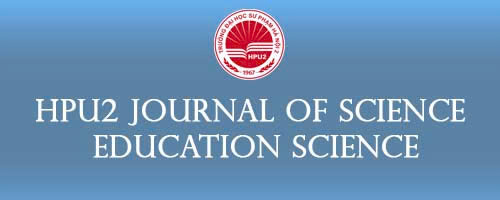A convergence enhancement approach for tomographic reconstruction in ultrasonic tomography
DOI:
https://doi.org/10.56764/hpu2.jos.2024.3.2.59-69Abstract
Ultrasound tomography is a non-invasive imaging technique that seeks to determine the internal distribution of acoustic properties within the body by analyzing measured ultrasound data. Based on the distorted Born iterative method (DBIM), this work suggests employing resolution-jumping and beamforming techniques for tomographic ultrasound imaging. The beamforming technique leverages multiple transmitting elements from the ultrasound probe, operating concurrently, to generate a focused and narrow beam. This targeted approach helps in reducing noise, thus enhancing the quality of the collected data. Meanwhile, resolution-jumping optimizes the imaging process by adjusting the resolution dynamically, thereby improving both the quality and speed of the reconstruction. The benefits of the proposed method are evident in the results of numerical simulations, which demonstrate a substantial improvement in the quality of image recovery. These simulations also highlight a significant reduction in the total runtime required for imaging, showcasing the efficiency of the approach. By combining these advanced methods, the work offers a promising pathway toward more accurate and faster tomographic ultrasound imaging, which could lead to better diagnostic capabilities in medical applications.
References
[1] F. Schubert, “Basic principles of acoustic emission tomography,” J. Acoustic Emission, vol. 22, pp. 147–158, 2004. [Online]. Available: https://www.ndt.net/article/jae/papers/22-147.pdf.
[2] C. Pintavirooj, K. Jaruwongrungsee, W. Withayachumnankul, K. Hamamoto, and S. Daochai, “Ultrasonic diffraction tomography: the experimental result,” in WSCG’2005, 2005, pp. 49–50.
[3] Philippe Lasaygues, Régine Guillermin, and J.-P. Lefebvre, “Ultrasonic computed tomography,” in Springer eBooks, pp. 441–459, Nov. 2010, doi: 10.1007/978-94-007-0017-817.
[4] T. Q. Huy, H. H. Tue, T. T. Long, and T. Duc-Tan, “Deterministic compressive sampling for high-quality image reconstruction of ultrasound tomography,” BMC Med. Imaging, vol. 17, no. 1, May. 2017, doi: 10.1186/s12880-017-0206-8.
[5] Z. Miao and P. Kosmas, “Multiple-frequency DBIM-TwIST algorithm for microwave breast imaging,” IEEE Trans. Antennas Propag., vol. 65, no. 5, pp. 2507–2516, May. 2017, doi: 10.1109/tap.2017.2679067.
[6] R. Lavarello and M. L. Oelze, “Density imaging using a multiple-frequency DBIM approach,” IEEE IEEE Trans. Ultrason. Ferroelectr. Freq. Control, vol. 57, no. 11, pp. 2471–2479, Nov. 2010, doi: 10.1109/tuffc.2010.1713.
[7] T. Quang-Huy, K. T. Nguyen, P. T. Doan, and D.-T. Tran, “Interpolated hybrid DBIM approach for enhanced imaging in ultrasound tomography,” Res. Biomed. Eng., vol. 38, no. 2, pp. 389–400, Jan. 2022, doi: 10.1007/s42600-021-00192-x.
[8] L. Guo, M. K. Farsani, A. Stancombe, K. Bialkowski, and A. Abbosh, “Adaptive clustering distorted Born iterative method for microwave brain tomography with stroke detection and classification,” IEEE Trans. Biomed. Eng., vol. 69, no. 4, pp. 1512–1523, Apr. 2021, doi: 10.1109/tbme.2021.3122113.
[9] A. Carevic et al., “Solving the ultrasound inverse scattering problem of inhomogeneous media using different approaches of total least squares algorithms,” in Proc. SPIE 10580, Medical Imaging 2018: Ultrasonic Imaging and Tomography, Mar. 2018, p. 105800J, doi: 10.1117/12.2293627.
[10] L. Zhang et al., “The identification of accurate and computationally efficient arrival time pick-up method for acoustic tomography,” in Nondestructive characterization and monitoring of advanced materials, aerospace, civil infrastructure, and transportation XIII, Proceedings of the SPIE, Vol. 10971, Apr. 2019, p. 1097114, doi: 10.1117/12.2515403.
[11] R. M. Nakanishi, “Comparison of experimental and numerical simulation data of ultrasound signals,” M. S. thesis, Dept. of Polytechnic School, University of Sao Paulo, Sao Paulo, Brazil, 2019, doi:10.11606/D.3.2020.tde-08012020-162233.
[12] R. Wang, Y. Gao, M. Zhang, Y. Sun, and H. Li, “Research on tomography system for ultrasonic process of particle two-phase flow based on adaptive filtering.,” in ICISCAE (IEEE), 2021, pp. 404–409, doi: 10.1109/iciscae52414.2021.9590729.
[13] T. Szasz, A. Basarab, and D. Kouame, “Beamforming through regularized inverse problems in ultrasound medical imaging,” IEEE Trans. Ultrason. Ferroelectr. Freq. Control, vol. 63, no. 12, pp. 2031–2044, Dec. 2016, doi: 10.1109/tuffc.2016.2608939.
[14] D. Han, “Comparison of commonly used image interpolation methods,” in Proceedings of the 2nd International Conference on Computer Science and Electronics Engineering (ICCSEE 2013), Jan. 2013, doi: 10.2991/iccsee.2013.391.
[15] W. C. Chew and Y. M. Wang, “Reconstruction of two-dimensional permittivity distribution using the distorted Born iterative method,” IEEE Trans. Med. Imaging, vol. 9, no. 2, pp. 218–225, Jun. 1990, doi: 10.1109/42.56334.
[16] D. Borup, “Nonperturbative diffraction tomography via Gauss-Newton iteration applied to the scattering integral equation,” Ultrason. Imaging, vol. 14, no. 1, pp. 69–85, Jan. 1992, doi: 10.1016/0161-7346(92)90073-5.
[17] M. L. Tracy and S. A. Johnson, “Inverse scattering solutions by a sine basis, multiple source, moment method—Part II: Numerical evaluations,” Ultrason. Imaging, vol. 5, no. 4, pp. 376–392, 1983, doi: 10.1177/016173468300500407.
[18] R. J. Lavarello and M. L. Oelze, “Density imaging using inverse scattering,” J. Acoust. Soc. Am., vol. 125, no. 2, pp. 793–802, Feb. 2009, doi: 10.1121/1.3050249.
[19] T. J. Cavicchi, S. A. Johnson, and W. D. O’Brien, “Application of the sinc basis moment method to the reconstruction of infinite circular cylinders,” IEEE Trans. Ultrason. Ferroelectr. Freq. Control, vol. 35, no. 1, pp. 22–33, Jan. 1988, doi: 10.1109/58.4144.
[20] M. Slaney, A. C. Kak, and L. E. Larsen, “Limitations of Imaging with First-Order Diffraction Tomography,” IEEE Trans. Microw. Theory Tech., vol. 32, no. 8, pp. 860–874, Aug. 1984, doi: 10.1109/tmtt.1984.1132783.
Downloads
Published
How to Cite
Volume and Issue
Section
Copyright and License
Copyright (c) 2024 Quang-Huy Tran, Minh-Duc Dao, Manh-Quang Vu, The-Lam Nguyen, Thi-Theu Luong

This work is licensed under a Creative Commons Attribution-NonCommercial 4.0 International License.







